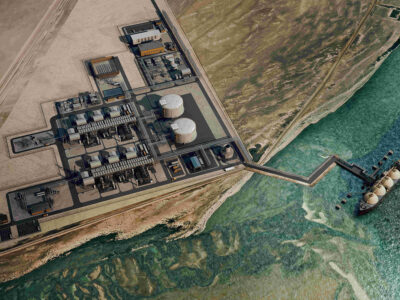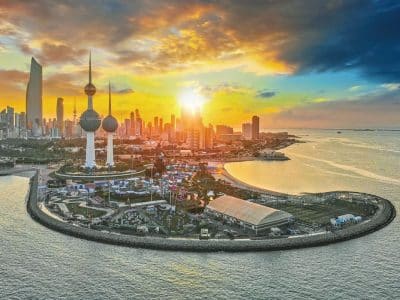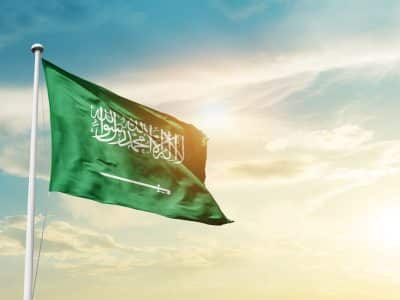The Emirates of Dubai and Abu Dhabi are frequently under the spotlight when it comes to expanding power and water capacities to keep up with rapid population and industrial growth in the UAE. Billions of dirhams are being invested to ensure that the country’s growth is sustained by its utilities, and that its two major cities remain well and truly on the map. But what of the situation in the Northern Emirates?
“In the other Emirates the growth is the same,” says Mohamad Mohd Saleh, director of water at the Federal Electricity and Water Authority (FEWA). “It really is a challenge to meet the demand from this abnormal growth.”
With our strategic plan, we intend to cover our needs from ADWEA and they are fully supporting FEWA’s requirement – Mohamad Mohd Saleh.
Saleh has spent 24 years in the water industry, becoming director of water when FEWA was established in 2000. His role covers both production and distribution for Ajman, Fujairah, Ras al-Khaimah and Um al-Quwain, as well as rural parts of Sharjah.
“It is quite a geographical area,” says Saleh. “We have hamlets of 15 or 20 houses which we have to cover, which is quite costly, but we are doing that.”
It is a considerable challenge to supply to some of the more inland area’s of Saleh’s jurisdiction and, in addition to a number of decentralised desalination plants, FEWA is relying heavily on counterpart Abu Dhabi Water and Electricity Authority (ADWEA) to meet the needs of its residents and businesses.
“Recently we have been taking water from the Fujairah desalination plant,” Saleh explains. The project belongs to ADWEA despite operating on FEWA territory. “ADWEA invested money there. We have an agreement with them to take water there and we have a network connected to the main line.
“We are facing a big problem in areas which are removed from the sea where you cannot build desalination plants. Today, the utility (ADWEA) has a pipeline going from Fujairah to Al Ain – and we have several connections on that line, which has helped us a lot to solve this problem, to supply water to places like Dhayd and Manamah, which had scarcity in water supply.”
Saleh puts FEWA’s current offtake from ADWEA at around 10 million gallons per day (MIGD). “We are about to renew the contract and ask to increase those quantities according to our requirements,” he says. “But nothing has been signed yet. With our strategic plan, we intend to cover our needs from ADWEA and they are fully supporting FEWA’s requirement.”
In an expansion of the Fujairah water and power plant, Veolia subsidiary Sidem is to build a desalination plant at Qidfa with a capacity of 130 MIGD, scheduled for commissioning in the summer of 2010.
Saleh accepts that desalination is the only answer to satisfying the entire region’s water needs and points to ADWEA as an example for utilities to follow, due to good water management and efforts to reduce the impact of desalination on the environment. “Our situation is a bit unique,” he says. “In all of the Gulf countries there is no groundwater, no natural sources of water, so you have to go for desalination plants. That’s the only strategic goal that you have to achieve.
“ADWEA is a good model to copy. They have invested a lot of money in constructing desalination plants in the Gulf of Oman. The Arabian Gulf has a lot of desalination plants, which may have some hazardous effects on the marine life there. It is almost a closed sea.”
FEWA is doing its best to reduce of the cost of its own desalination, installing pressure exchangers which cut the power consumption by almost half.
But perhaps there is still a lack of public awareness about just how costly it is to provide fresh water. Saleh feels the culture for conservation is not yet there. “Conservation is a trend everywhere in the world. Everybody is talking about it but on the ground, we do not feel it,” he says.
“We try to start from the schools with the young generation, so that they will have the culture for conservation, and know how scarcity will affect everybody if we are going to turn the tap on without thinking to get water. They should be aware of the procedures going on to get the water to that tap.”
As for encouraging businesses to be more economical with water, there needs to be accurate metering and meter reading – and Saleh believes some tariff restructuring could be a possible solution, with increased tariffs for high consumption, though specifics are still to be decided. “We have to review the tariff structure – when you consume more, you have to pay more,” says Saleh.
Looking ahead, FEWA’s strategy is simple. “There are shortages in some places – we try to bridge the gap by building new plants to meet that demand.”
As the international profile of the UAE grows bigger, the Northern Emirates will no doubt establish themselves more firmly on the map and FEWA will need to expand at an equal rate. With ADWEA’s support, it looks to be up to the task.







